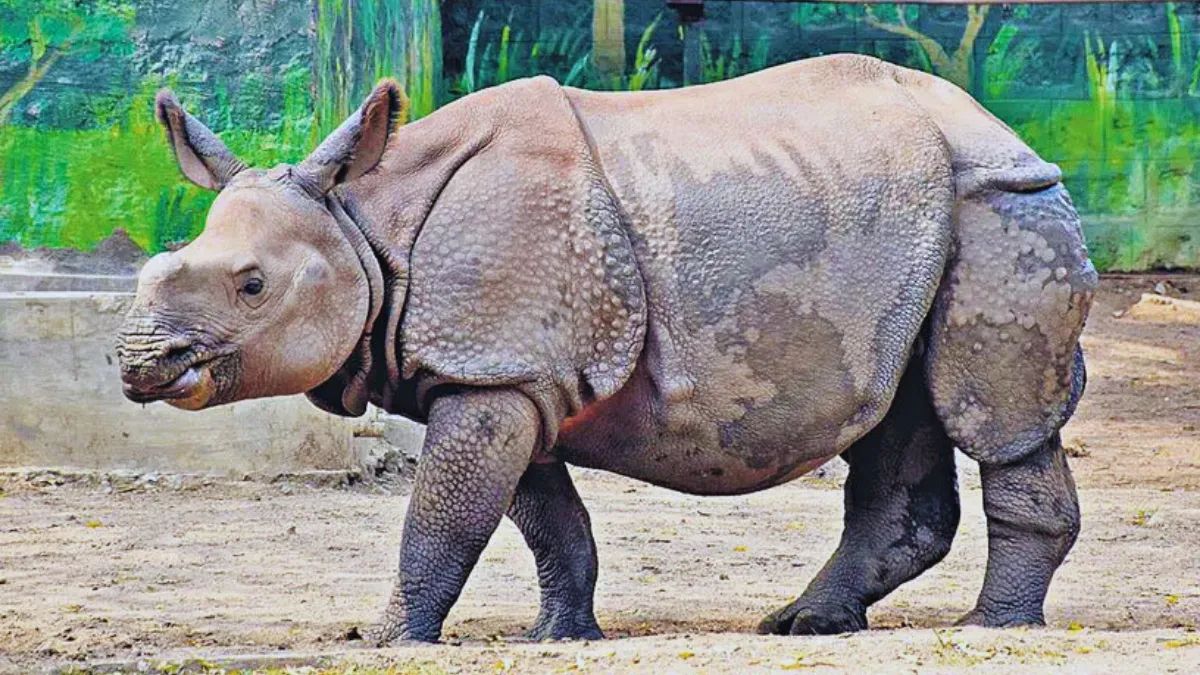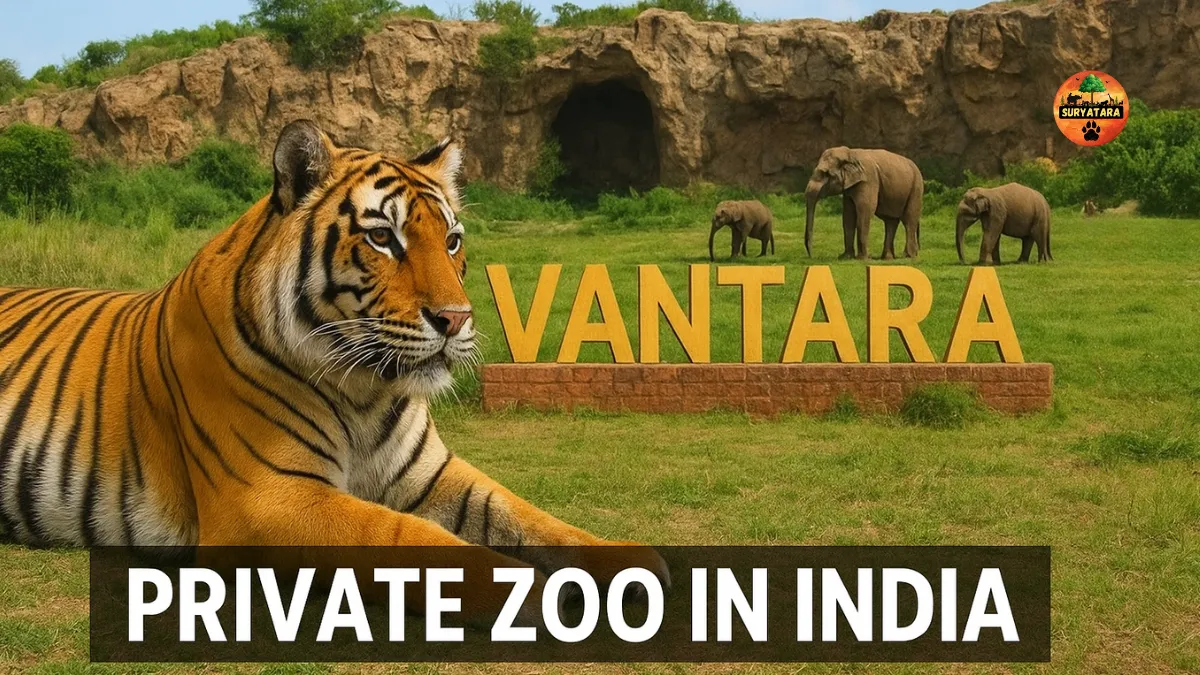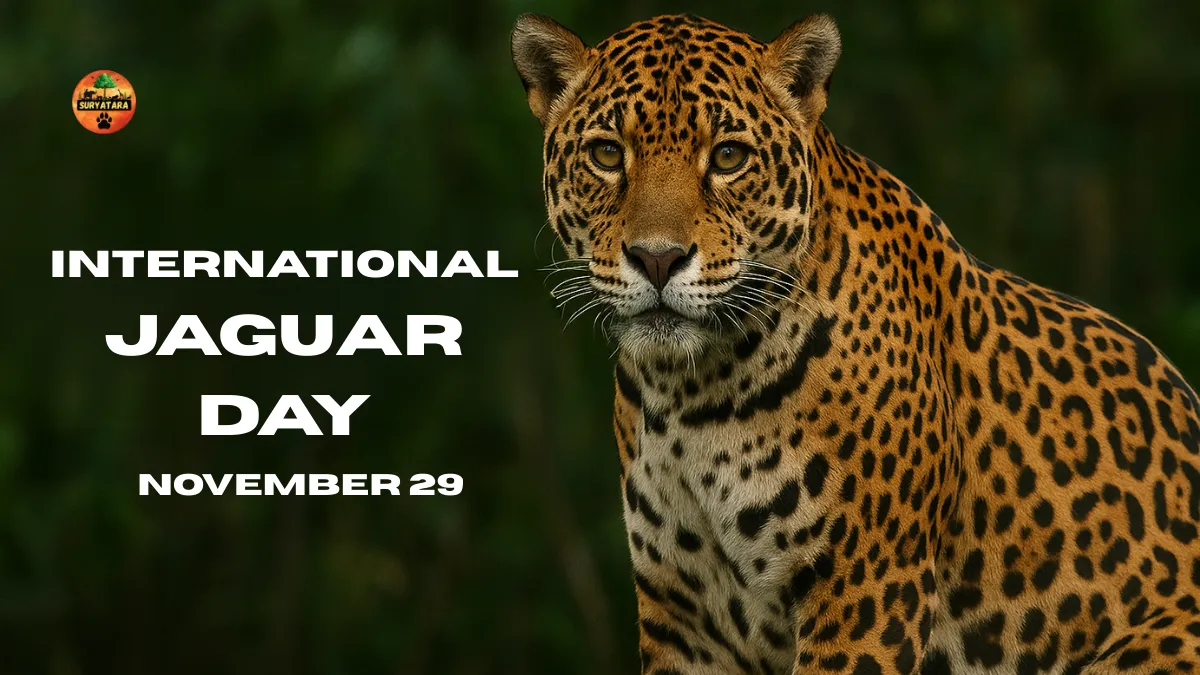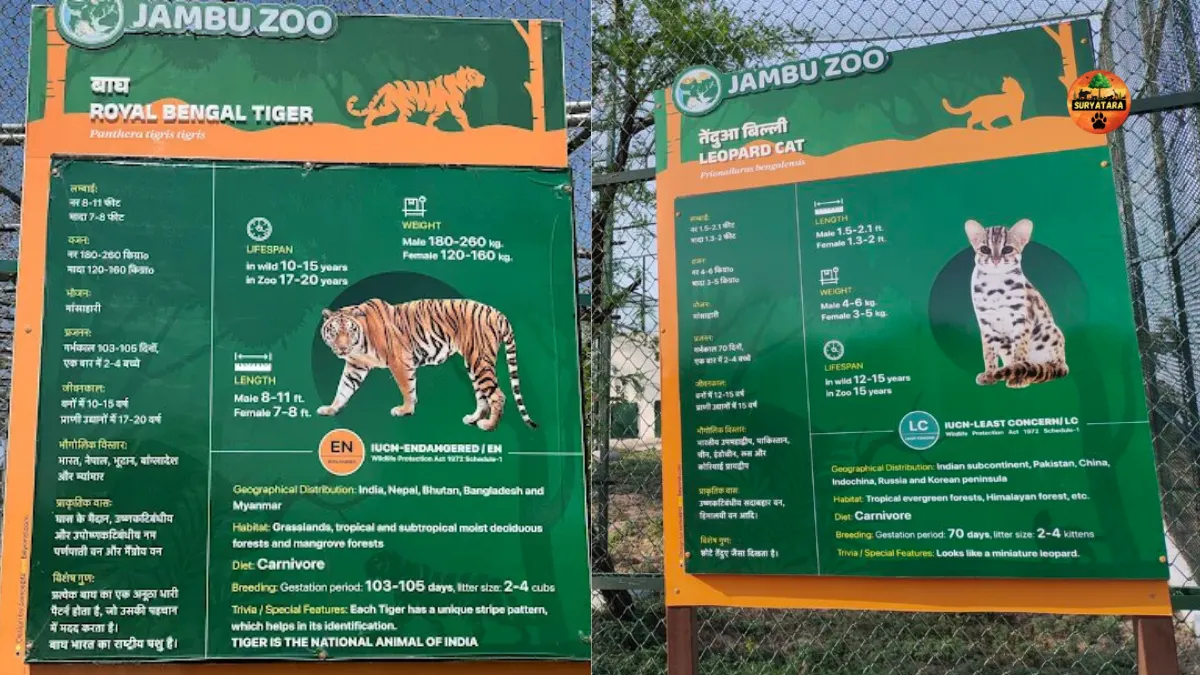Two new zoos to be built in Jharkhand will soon change the state’s wildlife tourism landscape. Along with the zoos, the government has also given the green signal for a tiger safari, opening up new opportunities for tourism, wildlife conservation, and local employment. This development is set to bring Jharkhand into the spotlight as a prime destination for nature lovers and adventure seekers.
Major Boost for Tourism and Wildlife
The people of Jharkhand have received some exciting news. The state government has approved the construction of two modern zoos in separate districts — Giridih and Dumka. Additionally, a tiger safari will be set up in the Putwagarh protected forest area of Latehar district. These projects aim to attract a larger number of tourists, showcase the state’s biodiversity, and provide a unique wildlife experience without harming the natural ecosystem.
The tiger safari will be developed over 150 hectares of land just outside the Palamu Tiger Reserve in Latehar. By placing it outside the reserve’s core area, the government ensures that the safari will be safe for both visitors and wildlife, while also minimizing environmental disruption.
Decision Taken in High-Level Meeting
The plan for the two new zoos and the tiger safari was finalized during the 15th meeting of the State Board for Wildlife, chaired by Chief Minister Hemant Soren. The meeting focused on enhancing Jharkhand’s wildlife infrastructure, promoting eco-tourism, and generating employment for local communities.
The Chief Minister emphasized the importance of transparency and timely execution in these projects. Departments concerned with forest management, tourism, and infrastructure have been instructed to work in coordination to ensure that the construction is carried out smoothly.
How the Projects Will Help the State
The decision to build two new zoos in Jharkhand and a tiger safari is not just about recreation — it has multiple long-term benefits:
- Tourism Growth: Wildlife tourism is one of the fastest-growing sectors in India. The new zoos and tiger safari will put Jharkhand on the map for domestic and international tourists.
- Employment Creation: From construction work to hospitality services, local communities will benefit from a range of job opportunities.
- Wildlife Conservation: Modern zoos act as centers for conservation, research, and breeding of endangered species.
- Education and Awareness: Visitors, especially school and college students, will gain exposure to the importance of biodiversity and wildlife protection.
Details of the Zoos
The upcoming zoo in Giridih will be built over a massive 396.22 hectares of land. This large area will allow for spacious enclosures, natural habitats for animals, and visitor facilities such as walking trails, interpretation centers, and eco-friendly transport systems inside the zoo.
The Dumka zoo will occupy 116.35 hectares of forest land under the Hijla Western Forest Area. This location was chosen for its rich biodiversity and accessibility for tourists from neighboring districts. The design is expected to follow global best practices for animal welfare, visitor safety, and environmental sustainability.
The Tiger Safari in Latehar
The tiger safari planned for Latehar is one of the most exciting parts of the project. Spread across 150 hectares outside the Palamu Tiger Reserve, it will allow tourists to see tigers up close in an environment that closely mimics their natural habitat. The safari will feature guided tours in secure vehicles, observation decks, and educational displays about tiger conservation.
Importantly, by situating the safari outside the core tiger reserve, the government aims to avoid disturbing the reserve’s delicate ecosystem while still offering visitors a thrilling experience.
Potential Economic Impact
Jharkhand has rich natural resources, but in recent years, tourism has not been fully tapped as a source of income for the state. With two new zoos to be built in Jharkhand and the addition of a tiger safari, the local economy is expected to receive a significant boost. Hotels, restaurants, transportation services, and handicraft markets around Giridih, Dumka, and Latehar are likely to see increased demand.
Tour operators may also start offering combined packages, including visits to the zoos, tiger safari, waterfalls, and heritage sites. This will create a chain of economic activity benefiting multiple sectors.
Environmental and Social Responsibility
While the announcement has generated excitement, it also comes with a responsibility to balance tourism with environmental protection. The government has assured that both the zoos and the tiger safari will be developed according to eco-friendly principles. Measures will include:
- Minimizing deforestation during construction
- Using renewable energy sources wherever possible
- Ensuring proper waste management systems
- Creating water bodies inside the zoos to support local flora and fauna
Social responsibility will also play a role. Locals, especially tribal communities, will be involved in jobs such as guides, conservation workers, and cultural performers, ensuring they benefit directly from the projects.
What Visitors Can Expect
Once completed, the two new zoos and tiger safari will offer visitors:
- Wide varieties of animals, including both native and exotic species
- Natural-style enclosures designed to mimic original habitats
- Dedicated zones for reptiles, birds, mammals, and aquatic life
- Interactive educational centers with digital displays and documentaries
- Cafeterias and eco-friendly souvenir shops
- Safari tours with trained guides providing insights about tiger behavior and conservation
Also Read: Surat Sarthana Zoo Ticket Price, Timings, Location & Visitor Guidelines
A Step Towards Making Jharkhand a Tourism Hub
Jharkhand already boasts several tourist attractions, including waterfalls, hills, temples, and wildlife reserves. However, it has not been widely marketed as a tourism hub compared to states like Rajasthan or Kerala. The addition of two new zoos to be built in Jharkhand and a tiger safari will give it a stronger identity in India’s tourism sector.
These projects also align with the broader trend of eco-tourism, where travelers seek experiences that connect them with nature while contributing to conservation. By investing in world-class wildlife facilities, Jharkhand has the potential to become a must-visit destination for wildlife enthusiasts.
Also Read: Sarthana Nature Park Tickets Price, Timings, Location & Visitor Guide
Conclusion
The timelines for completion of these projects have not been officially announced, but given the state government’s push, work is expected to begin soon. If implemented effectively, the zoos and tiger safari could start welcoming visitors within the next few years.
The success of these initiatives will depend not just on construction but also on their ongoing management, quality of visitor experience, and conservation impact. With careful planning, Jharkhand could set a benchmark for other states looking to combine tourism with wildlife protection.
In summary, the decision to approve two new zoos to be built in Jharkhand along with a tiger safari marks a historic moment for the state. It promises tourism growth, employment opportunities, wildlife conservation, and educational value. With the right approach, these projects could transform Jharkhand into a leading name in India’s eco-tourism sector while preserving its natural heritage for future generations.












